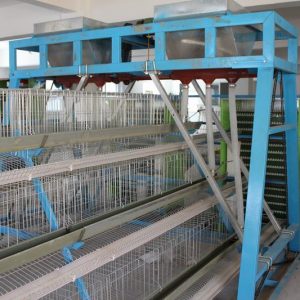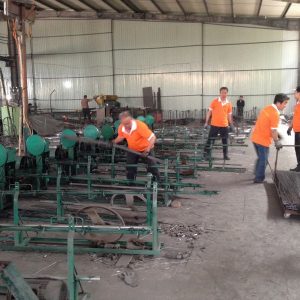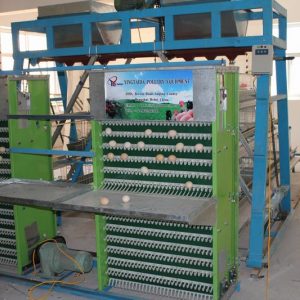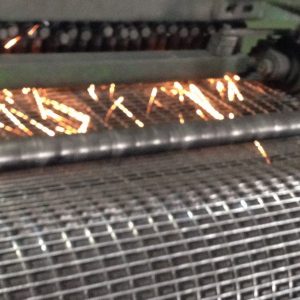
Talking about the feeding and management of laying hens in summer
Chickens do not have sweat glands and are covered with plump feathers. They cannot adjust body temperature by sweating. They can only adjust body temperature by spreading wings and breathing to evaporate water or increase drinking water. Therefore, chickens are more sensitive to heat stress. When the temperature of the chicken house exceeds 28°C, the water consumption of the chicken will increase, the feed consumption will be reduced, the body temperature of the chicken will increase, the number of breaths will increase, the blood pressure will decrease, the blood calcium content will decrease, the chicken flock will develop poorly, grow slowly, stop, even lose weight, and survive. Decrease, decrease in egg production rate, decrease in egg weight, thinning of egg yolk protein, thinning of egg shell, increase in broken egg rate, and increase in soft egg rate. Therefore, in hot summer, to maintain the health of the flock and the performance of the production performance, the flock must be well maintained. Heatstroke prevention and cooling work.
Everyone knows that the most suitable house temperature for laying hens is between 13°C and 23°C. In the hot summer, high temperature and humidity are the most difficult season for chickens. The scorching heat causes the chickens to breathe for a long time. When the house temperature exceeds 30°C, the chickens will have a heat stress state, showing prolonged breathing, increased water consumption, insufficient feed intake, decreased egg production, and reduced egg weight. Thinning of eggshells, increased egg breakage rate, decreased resistance, increased mortality, etc. Therefore, it is very important to adopt reasonable and effective feeding management to maintain high yield of laying hens in summer.
Improve the internal and external environment of the chicken house, strengthen the cooling and heatstroke prevention function
1. Try to increase the thermal insulation capacity of the roof and walls and reduce the solar radiant heat entering the house.
2. Set up sunshade nets or awnings outside the windows to prevent direct sunlight from shining on the chickens.
3. Insist on removing feces in the house every day to reduce the heat production of feces in the house.
4. Improve the ventilation conditions, and the chicken farms with conditions can adopt longitudinal ventilation. Naturally ventilated chicken coops should increase the ventilation openings as much as possible. If the area of the roof skylights is increased, the effect will be better.
Reasonable heatstroke prevention measures
1. Increasing the wind speed in the chicken house can take away the heat production of the chicken body. If the wind speed in the house can reach 1 m to 1.5 m/s, the heat stress of the chicken can be reduced.
2. After the house has a certain wind speed, you can spray in the house and use the evaporation of water to reduce the temperature of the house, which generally has obvious effects. However, it is worth noting that when the wind speed in the house is not high, the spray should not be used to cool down. At this time, the spray is not conducive to the heat dissipation of the chickens. The chicken farms with conditions can adopt longitudinal ventilation to install wet curtains, which can basically ensure the safety of the chickens. To spend the summer.
3. Let the chicken drink cool water. Drinking water with a lower temperature can reduce the heat stress of the chicken. Cool groundwater can be used. Water should be placed at the end of the water pipe once in about 2 hours to make the water temperature in the water pipe lower.
4. Insulation layer or white paint can be installed on the roof of the chicken house, and white ash can be applied to avoid direct sunlight on the roof to reduce the intensity of sunlight and reduce heat absorption.
5. Doing a good job of greening the environment around the chicken house can not only reduce radiant heat, but also absorb carbon dioxide, reduce dust density, and purify the air inside and outside the house. Planting tall trees or a pergola 2 meters to 3 meters away from the sunny side of the chicken house can increase the shading surface of the chicken house; plant vines outside the house, so that it can climb on the roof of the house without affecting normal ventilation. Cool down; plant sod on the ground to reduce radiant heat.
Improve chicken population
1. Change the feeding time and increase the number of feedings to increase the feed intake of chickens. Feed 5 times a day, 3 times before 11:00 and 2 times after 15:00. 10 minutes to 15 minutes after turning on the lights at 4:00~5:00, the first batch of feed, 17:00~18:00 for the first batch of feed, 13:00~15:00 stop feeding, in order to try Reduce chicken activity.
2. Reduce the stocking density and appropriately reduce the density of the chickens, which can reduce the temperature of the house and improve the crowding situation when eating and drinking. Cage-raised laying hens should be 0.4 square meters each and 3 per cage; flat-raised laying hens should be 3 to 5 per square meter, and 250 per flock.
3. During the intense heat, chickens consume less feed. In order to meet the nutritional needs of the chickens for energy and protein, the nutrient concentration of the feed should be increased. It is possible to add fats with high absorption and utilization in the feed. Simply increasing the protein in the feed is not conducive to heatstroke prevention. Excessive protein and excess amino acids will increase the heat production of the chicken body when converted into energy. The accurate method is not to increase the content of crude protein, but to improve the quality of protein, by adding methionine and lysine to increase the utilization rate of protein.
Improve the ability of chickens to resist heat stress
1. In order to improve the anti-heat stress ability of chickens, double the amount in the feed and add VC in the drinking water. The recommended amount is 10 kg/g, and it can be doubled in severe cases.
2. In the hot summer, chickens gasp for a long time, which makes the amount of carbon dioxide in the blood insufficient, affects the acid-base balance in the blood, and affects the quality of eggshells. In order to improve this situation, 0.2% sodium bicarbonate can be added to feed or drinking water. Also, due to the large amount of drinking water, the amount of water excretion is also large and takes away the salt in the digestive tract. In order to maintain the electrolysis balance of the digestive tract, approximately 0.2% potassium chloride can be added to the feed.
3. Because the amount of drinking water is too large, the digestive juice is diluted, which weakens the digestive and defense capabilities of the digestive tract. Therefore, it is necessary to regularly add antibiotics or use probiotics to maintain the flora of the digestive tract.
Throughout the high temperature summer, under the state of heat stress, the immunity and disease resistance of chickens are very low, and infectious diseases are prone to occur. Therefore, in summer, in addition to preventive measures to prevent heatstroke and cooling, we must also prevent fowl cholera. , E. coli, necrotizing enteritis, coccidiosis, enterotoxicosis, mycosis, Newcastle disease, bursa of fabric and other diseases, do a good job of health care for chickens.



